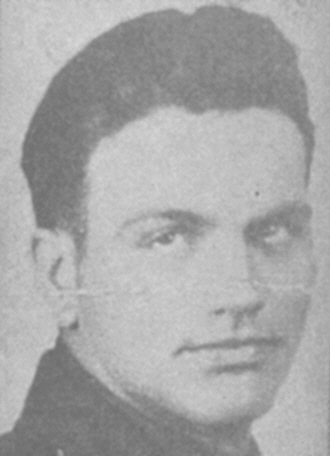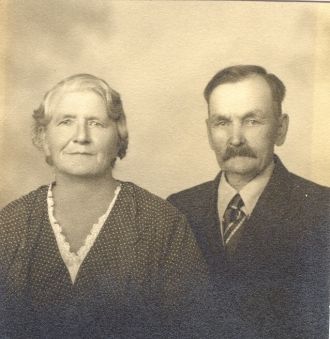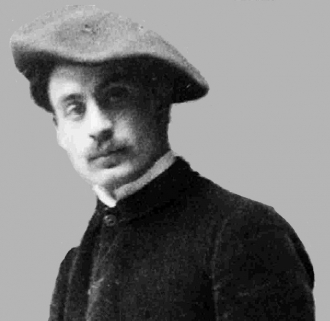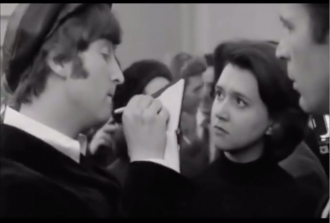Advertisement
Advertisement
Kristine Phillips
About me:
This is Peder Benjamin Taylor. His parents are Daniel James Taylor and Gertrude Sata. He served in the Marine Corps during WWII. He grew up in Minnesota. His final resting place is at Fort Snelling in Minnesota. He died in August 25, 1965 at the age of 45.
About my family:
I haven't shared details about my family.
Interested in the last names:
I'm not following any families.
Updated: May 16, 2023
Message Kristine Phillips
Loading...one moment please


Recent Activity

Kristine Phillips
updated a bio
May 16, 2023 12:23 PM
cause of death
Cancer
Cancer

Kristine Phillips
updated a bio
May 16, 2023 12:22 PM

Kristine Phillips
followed a photo
Aug 08, 2020 4:48 PM

Kristine Phillips
followed a bio
Aug 08, 2020 4:48 PM
Photos Added

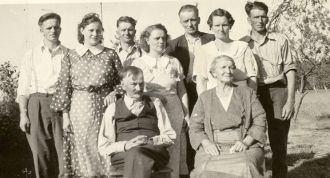
Sata Family
B.R. Phillip, Chrest, Edward, Hilmar Sata, M.R. Alvina, Clara, Gertrude, F.R. Peder and Anna Sata
People in photo include: Phillip Sata , Chrest Sata, Edward Sata, Hilmar Sata, and Peder Sata
People in photo include: Phillip Sata , Chrest Sata, Edward Sata, Hilmar Sata, and Peder Sata
People tagged:
Recent Comments

Kristine Phillips
commented
Aug 08, 2020 4:47 PM

Kristine Phillips
commented
Jul 22, 2020 5:34 PM

Kristine Phillips
commented
Mar 20, 2019 7:54 PM

Kristine Phillips
commented
Mar 20, 2019 7:52 PM

Kristine Phillips
commented
Apr 05, 2014 4:22 PM
Kristine's Followers
Lori Russell
My mother is Pamela Thompson. My dad is Richard William Russell.
My mom grew up in Fenwick Michigan. My dad grew up in Hart Michigan. They had 2 kids together. Living in Michigan.
My mom grew up in Fenwick Michigan. My dad grew up in Hart Michigan. They had 2 kids together. Living in Michigan.
Favorites
Loading...one moment please



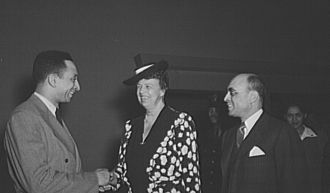
Eleanor Roosevelt was born on October 11, 1884 at W 37th St in New York, New York USA. She was married to Franklin Delano Roosevelt on March 17, 1945 in United States, and they were together until Franklin's death on April 12, 1945 in United States. She had children Anna Eleanor Roosevelt, Jr., James Roosevelt, Franklin Delano Roosevelt Jr., Elliot Roosevelt, Franklin Delano Roosevelt, Jr., and John Aspinwall Roosevelt. Eleanor Roosevelt died at age 78 years old on November 7, 1962 in New York, and was buried on November 10, 1962 at Hyde Park, New York - family plot.

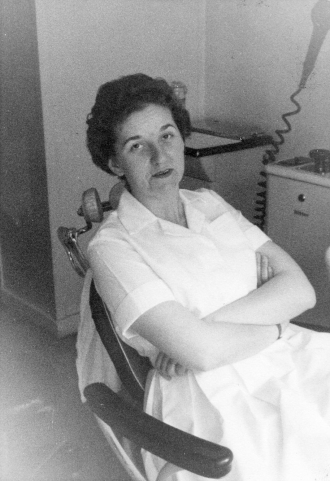
Ruth Mary (Arolan) Van Kleeck was born in 1931. Ruth Arolan was married to Warren S. Van Kleeck on April 9, 1950 in Kingston, Ulster County, New York USA, and they were together until Ruth's death in 1995. Family, friend, or fan, this family history biography is for you to remember Ruth Mary (Arolan) Van Kleeck.


Ruth Mary (Arolan) Van Kleeck
This appears to be her place of work. She looks like a nurse or dental hygienist.
People tagged:

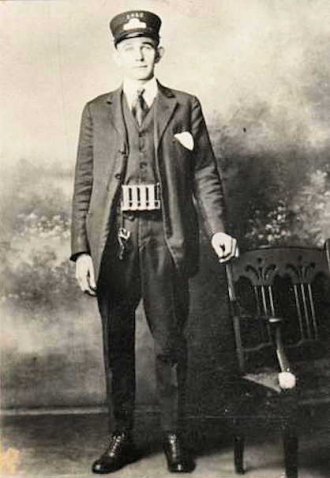
Harold M. "Peanuts" Edwards
This is a photo of Harold M. "Peanuts" Edwards added by Jennifer Ridner on July 31, 2020.
People tagged:

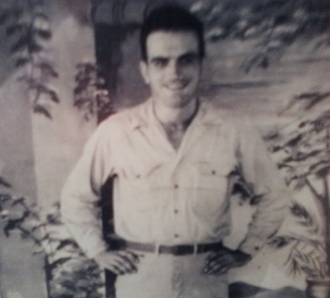
Peder Benjamin Taylor was born on April 23, 1920, and died at age 45 years old on August 25, 1965. Peder Taylor was buried at Ft. Snelling National Cemetery
Section O Site 2423 7601 34th Avenue, South, in Minneapolis, Mn. Family, friend, or fan, this family history biography is for you to remember Peder Benjamin Taylor.
AncientFaces
This account is shared by Community Support (Kathy Pinna & Daniel Pinna & Lizzie Kunde) so we can quickly answer any questions you might have.
Please reach out and message us here if you have any questions, feedback, requests to merge biographies, or just want to say hi!
2020 marks 20 years since the inception of AncientFaces. We are the same team who began this community so long ago. Over the years it feels, at least to us, that our family has expanded to include so many. Thank you!
2020 marks 20 years since the inception of AncientFaces. We are the same team who began this community so long ago. Over the years it feels, at least to us, that our family has expanded to include so many. Thank you!

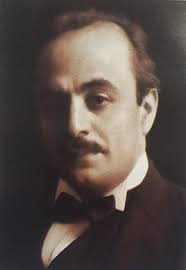
Kahlil Gibran
Gibran in 1913
Native name
جبران خليل جبران
Born January 6, 1883
Bsharri, Mount Lebanon Mutasarrifate, Ottoman Syria
Died April 10, 1931 (aged 48) New York City, United States
Resting place Bsharri, Lebanon
Occupation Writer, poet, visual artist, philosopher
Nationality Lebanese and American
Genre Poetry, parable, fragments of conversation, short story, fable, political essay, letter, aphorism
Literary movement Mahjar
Notable works The Prophet, The Madman, Broken Wings
Signature
Gibran Khalil Gibran (Arabic: جبران خليل جبران, ALA-LC: Jubrān Khalīl Jubrān, IPA: [ʒʊˈbrɑːn xæˈliːl ʒʊˈbrɑːn], or Jibrān Khalīl Jibrān, IPA: [ʒɪˈbrɑːn xæˈliːl ʒɪˈbrɑːn];[a] January 6, 1883 – April 10, 1931), usually referred to in English as Kahlil Gibran was a Lebanese-American writer, poet and visual artist, also considered a philosopher[4] although he himself rejected this title in his lifetime. He is best known as the author of The Prophet, which was first published in the United States in 1923 and is one of the best-selling books of all time, having been translated into dozens of languages.
Born in a village of the Ottoman-ruled Mount Lebanon Mutasarrifate to a Maronite Christian family, the young Gibran immigrated with his mother and siblings to the United States in 1895. As his mother worked as a seamstress, he was enrolled at a school in Boston, where his creative abilities were quickly noticed by a teacher who presented him to Fred Holland Day. Gibran was sent back to his native land by his family at the age of fifteen to enroll at al-Hikma School in Beirut. Returning to Boston upon his youngest sister's death in 1902, he lost his older half-brother and his mother the following year, seemingly relying afterwards on his remaining sister's income from her work at a dressmaker's shop for some time.
In 1904, Gibran's drawings were displayed for the first time at Day's studio in Boston, and his first book in Arabic was published in 1905 in New York City. With the financial help of a newly-met benefactress, Mary Haskell, Gibran studied art in Paris from 1908 to 1910. While there, he became involved in secret circles promoting rebellion in the Ottoman Empire after the Young Turk Revolution; his books were eventually banned by the Ottoman authorities. In 1911, Gibran settled in New York, where he would start writing The Prophet in 1915, and where his first book in English, The Madman, would be published by Alfred A. Knopf in 1918. His visual artwork was shown at Montross Gallery in 1914, and at the galleries of M. Knoedler & Co. in 1917. He had also been corresponding remarkably with May Ziade since 1912. In 1920, Gibran re-founded The Pen League with fellow Mahjari poets. By the time of his death at the age of 48 from cirrhosis and incipient tuberculosis in one lung, he had achieved literary fame on "both sides of the Atlantic Ocean", and The Prophet had already been translated into German and in French. His body was transferred to his birth village of Bsharri (in present-day Lebanon), to which he had bequeathed all future royalties on his books, and where a museum dedicated to his works now stands.
As worded by Suheil Bushrui and Joe Jenkins, Gibran's life has been described as one "often caught between Nietzschean rebellion, Blakean pantheism and Sufi mysticism." Gibran discussed "such themes as religion, justice, free will, science, love, happiness, the soul, the body, and death" in his writings, which were "characterized by innovation breaking with forms of the past, by symbolism, an undying love for his native land, and a sentimental, melancholic yet often oratorical style." He explored literary forms as diverse as "poetry, parables, fragments of conversation, short stories, fables, political essays, letters, and aphorisms." Salma Jayyusi has called him "the single most important influence on Arabic poetry and literature during the first half of [the twentieth] century." At the same time, "most of Gibran's paintings expressed his personal vision, incorporating spiritual and mythological symbolism", with art critic Alice Raphael recognizing in the painter a classicist, whose work owed "more to the findings of Da Vinci than it [did] to any modern insurgent." His "prodigious body of work" has been described as "an artistic legacy to people of all nations."
The Gibran family in the 1880s. Left to right: Gibran, Khalil (father), Sultana (sister), Butrus (half-brother), Kamila (mother)
Gibran was born January 6, 1883, in the town of Bsharri in the Mount Lebanon Mutasarrifate, Ottoman Empire (modern-day Lebanon), to Khalil Gibran and Kamila Gibran (Rahmeh). His mother, Kamila, daughter of a priest, was thirty when he was born; his father, Khalil, was her third husband. As a result of his family's poverty, Gibran received no formal schooling during his youth in Lebanon. However, priests visited him regularly and taught him about the Bible and the Arabic language.
Gibran's father initially worked in an apothecary, but with gambling debts he was unable to pay, he went to work for a local Ottoman-appointed administrator. Around 1891, extensive complaints by angry subjects led to the administrator being removed and his staff being investigated.
Kamila Gibran decided to follow her brother to the United States. Although Gibran's father was released in 1894, Kamila remained resolved and left for New York on June 25, 1895, taking Kahlil, his younger sisters Mariana and Sultana, and his elder half-brother Peter (in Arabic, Butrus).
Kahlil Gibran, photograph by Fred Holland Day, c. 1898
The Gibrans settled in Boston's South End, at the time the second-largest Syrian-Lebanese-American community in the United States. Gibran started school on September 30, 1895. School officials placed him in a special class for immigrants to learn English. Due to a mistake at the school, he was registered using the anglicised spelling 'Kahlil Gibran' His mother began working as a seamstress peddler, selling lace and linens that she carried from door to door. Gibran also enrolled in an art school at Denison House, a nearby settlement house. Through his teachers there, he was introduced to the avant-garde Boston artist, photographer, and publisher Fred Holland Day, who encouraged and supported Gibran in his creative endeavors. A publisher used some of Gibran's drawings for book covers in 1898.

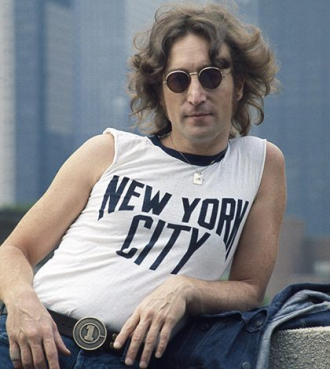
John Lennon had already started a solo career by the time the Beatles dissolved in 1970. In fact, he and new wife Yoko Ono had released three experimental LPs chronicling their lives together, and he had two hit singles under his belt: the anti-war anthem "Give Peace A Chance" and the Beatles-reminiscent "Instant Karma!"
Unsurprisingly, Lennon's post-Beatles solo work would also follow a more offbeat path. He made very few live appearances, and preferred to chase his own artistic muse and focus on political activism. In short, it was the perfect second musical act for the life-long outspoken nonconformist.
Lennon was born in 1940 in bombing-ravaged Liverpool, England. His parents' marriage was rocky and ended in divorce when the future Beatle was very young. In fact, Lennon never developed a relationship with his merchant seaman dad. He was instead raised by his aunt Mimi and uncle George, who provided him with the kind of stable home environment his biological parents could not.
Lennon's mother nevertheless encouraged his nascent musical talent, showing him rudimentary banjo chords and buying him his first guitar when he was a teenager. Thankfully, Lennon showed aptitude on the instrument and had designs on making his band the Quarrymen successful. Since he was a poor student and lasted only a year at art school, music was a good backup plan.
The Quarrymen—which at a future point also featured Paul McCartney and George Harrison—would eventually morph into the Beatles. Lennon's tenure in the Fab Four would’ve been enough to cement his musical legacy. In hindsight, however, it's even more impressive that he made such a clean break from the band that made him so popular.
1970's Plastic Ono Band LP was a direct result of the primal scream therapy he and Ono had with Dr. Arthur Janov. The straightforward, unadorned music was often emotionally piercing: on "Mother," Lennon sounds as if he's in agony recounting being caught in the middle of his parents' traumatic separation; the acoustic-driven "Working Class Hero" is an unsparing condemnation of how workers are treated; and on "God," he sounds weary renouncing everything in his life and belief system but "me, Yoko and me."
The next year's rowdy, inspiring "Power To The People" single and Imagine LP were more political and musically adventurous. (Sometimes both at once: witness the gnarled, psychedelic "I Don't Want To Be A Soldier Mama I Don't Wanna Die" and the touching, piano-based title track.) Imagine was also marked by brutal honesty, between Lennon's admissions of cruel behavior on "Jealous Guy" and alleged digs at Paul McCartney throughout "How Do You Sleep?"
Lennon's next few years were marked by ups and downs. 1972's Sometime In New York City and 1973's Mind Games didn't replicate the success of his first few solo albums. He separated from Ono for over a year and moved to Los Angeles to have a multi-month "lost weekend" marked by partying, heavy drinking and a production credit on pal Harry Nilsson's Pussy Cats (1974). To add insult to injury, Lennon was also trying to fight off being deported, an order that came down from the Nixon administration in 1973 due to his politics.
Still, there were bright spots. Lennon's horn-peppered, soul-influenced single "Whatever Gets You Through The Night" hit Number One in November 1974. The pianist on that song, Elton John, even persuaded Lennon to guest at his Thanksgiving Madison Square Garden show, where the pair performed "Lucy in the Sky with Diamonds" and "I Saw Her Standing There." And Lennon and Ono got back together and decided to have a baby.
Save for a few more high-profile appearances—including co-writing and performing on David Bowie's 1975 Number One hit "Fame"—he effectively took off the second half of the '70s to raise their newborn son, Sean Ono Lennon. He only returned to music in 1980, with the Ono collaborative album Double Fantasy.
Lennon never had a chance to experience a career resurgence while alive. On December 8, 1980, three weeks after Double Fantasy's release, the unthinkable happened: Mark David Chapman shot and killed Lennon outside his apartment in New York City.
The entire world stopped to grieve, and musical tributes poured in from all corners for years to come. These even included one from his Beatles bandmates, who all appeared on George Harrison's 1981 single, "All Those Years Ago."
Yet most of all, people found solace in Lennon's music. After his death, Double Fantasy's "(Just Like) Starting Over" hit Number One on the singles charts. Roxy Music covered "Jealous Guy" and made it their own. And Lennon's posthumous 1984 album Milk & Honey, was marked by the great "Nobody Told Me"—whose line about "strange days, indeed" was both bittersweet and comforting.
(Born October 9th, 1940, Died December 8th, 1980)


Melanija (Knavs) Trump was born in 1970 at Novo Mesto, Slovenia, Yugoslavia. Family, friend, or fan, this family history biography is for you to remember Melanija (Knavs) Trump .

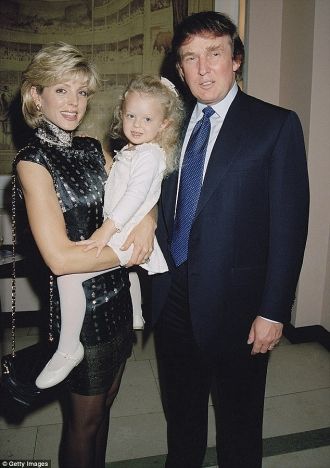
Marla Maples was born in 1963 at Cohutta, Georgia. Family, friend, or fan, this family history biography is for you to remember Marla Maples.


Tiffany Ariana Trump was born in 1993 at West Palm Beach, Florida. Family, friend, or fan, this family history biography is for you to remember Tiffany Ariana Trump.


Ivana Maria Zelnicek Zelnickova Trump's father was František Milan "Miloš" Zelníček (1927 - 1990) born in the Czech Republic, and her mother was Maria H Francova (1922 - 1989), also born in the Czech Republic. she was an only child.
Born in Czechoslovakia, Ivan petitioned for naturalization in the United States on May 25, 1988. Previous to moving to the U.S., Ivana had lived in Canada.
While living in Czechoslovakia, Ivana first married a friend, an Austrian skier, which availed her of Austrian citizenship and an Austrian passport.
Ivana married Donald Trump in Manhattan, New York, in 1977, and they had children Donald Jr., Eric, and Ivanka. They divorced in 1992, after a tabloid filling, tumultuous marriage. While they were married, Ivana (an astute businesswoman) was his business partner and reputedly responsible for what business successes he had.
After divorcing Donald Trump, Ivana then lived with Riccardo Giacomo Mazzucchelli for five years, marrying him in 1995.
In 2008, she married Italian actor and model Rossano Rubicondi, her 4th marriage. He was 23 years younger than she. They divorced less than a year later.


Donald John Trump Jr. was born in 1977 at New York City, New York. Family, friend, or fan, this family history biography is for you to remember Donald John Trump, Jr..


Ivanka Marie (Trump) Kushner was born in 1981 at New York City, New York. Family, friend, or fan, this family history biography is for you to remember Ivanka Marie (Trump) Kushner.


Eric Frederick Trump was born in 1984 at New York City, New York. Family, friend, or fan, this family history biography is for you to remember Eric Frederick Trump.


Donald and Ivana Trump Family
A photo of Donald an Ivana Trump and their 3 children - Donald Trump, Jr, Ivanka Trump, and Eric Trump.
People tagged:

